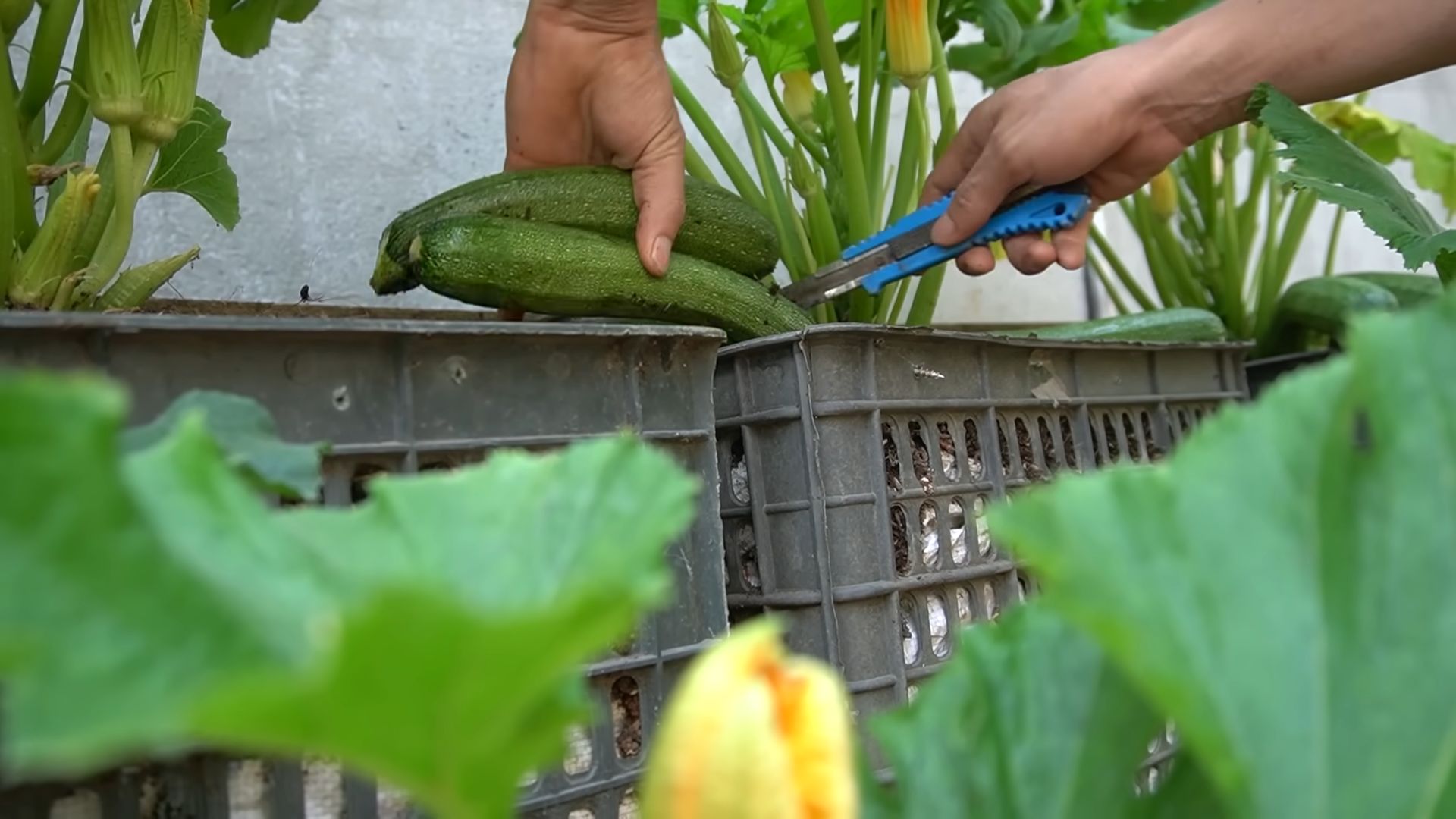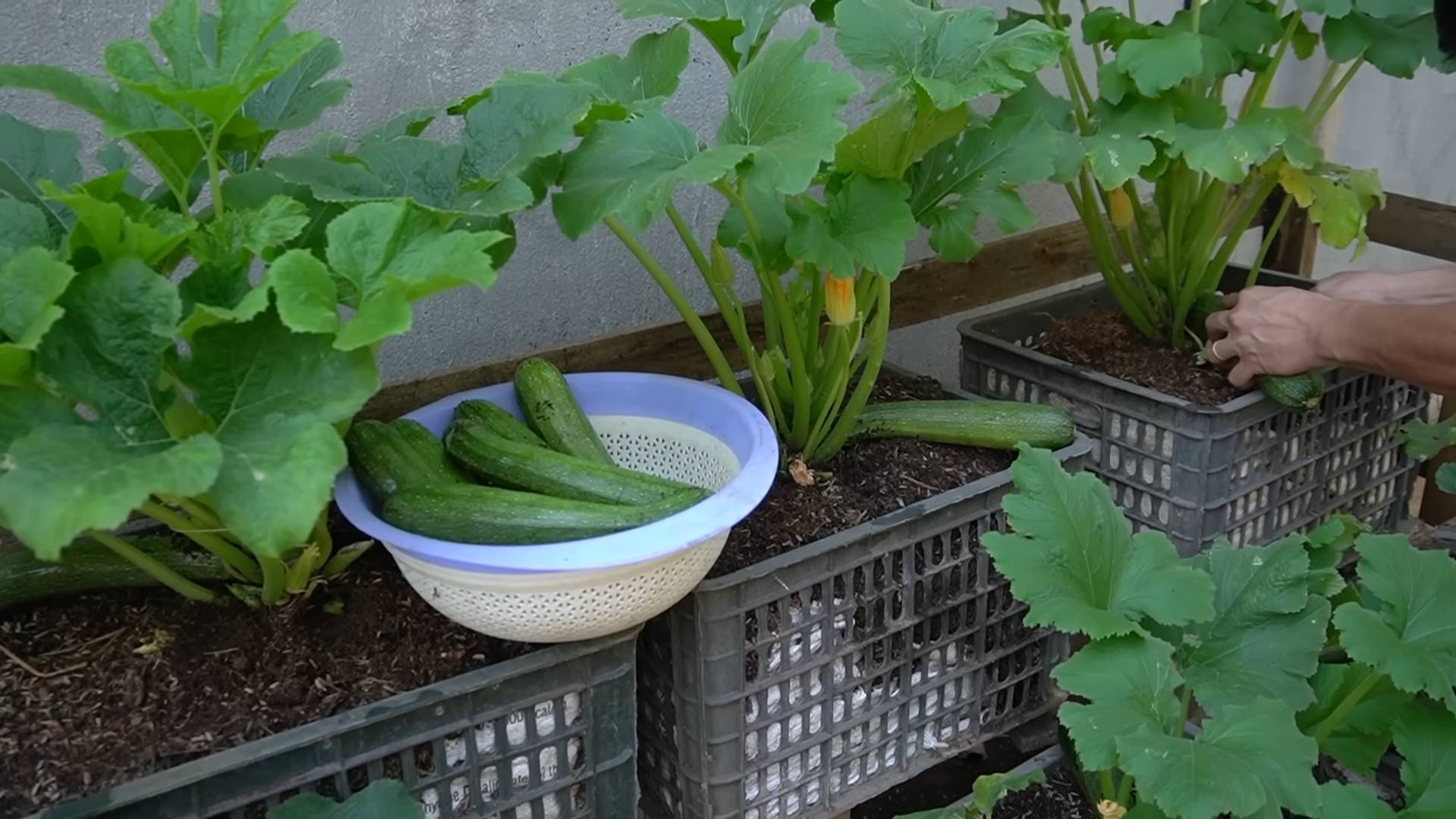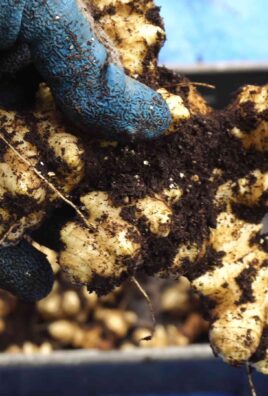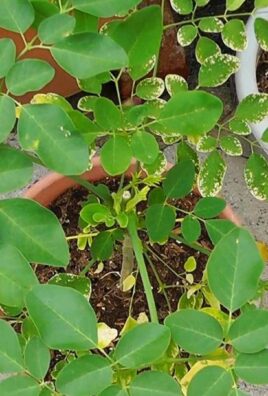Growing Zucchini at Home can feel like winning the lottery – a lottery of delicious, versatile vegetables, that is! Have you ever dreamt of stepping into your backyard and harvesting fresh, vibrant zucchini for your favorite summer recipes? I know I have! But let’s be honest, sometimes it feels like a gamble, doesn’t it? You either end up with a single, lonely zucchini, or a mountain so high you’re practically giving them away to the entire neighborhood.
Zucchini, a member of the squash family, has a fascinating history, tracing back to Central America and Mexico thousands of years ago. While the zucchini we know and love today was developed in Italy, its ancestors were a staple food for indigenous populations. Today, growing zucchini at home is a popular activity worldwide, connecting us to a rich agricultural heritage.
That’s where this DIY guide comes in! I’m here to share my tried-and-true tricks and hacks to help you cultivate a thriving zucchini patch, no matter your gardening experience. We’ll tackle common challenges like blossom end rot, powdery mildew, and those pesky squash bugs. Imagine the satisfaction of creating delicious zucchini bread, flavorful stir-fries, and even zucchini noodles, all from your own backyard. So, grab your gardening gloves, and let’s get started on your journey to zucchini abundance!

Growing Zucchini at Home: A Beginner’s Guide
Okay, zucchini lovers, let’s get down to business! I’m going to walk you through everything you need to know to grow your own bountiful zucchini crop right in your backyard (or even in containers!). Trust me, there’s nothing quite like the satisfaction of harvesting your own fresh zucchini. Plus, you’ll have enough to share with all your friends and neighbors – zucchini bread for everyone!
Choosing Your Zucchini Variety
First things first, let’s talk zucchini varieties. There are tons to choose from, and each has its own unique characteristics. Here are a few popular options:
* Black Beauty: This is a classic, reliable variety that produces dark green, almost black, zucchini. It’s known for its high yields and disease resistance.
* Costata Romanesco: If you’re looking for something a little different, this Italian heirloom variety is a great choice. It has distinctive ridges and a nutty flavor.
* Golden Zucchini: For a pop of color in your garden, try growing golden zucchini. They have a mild, sweet flavor and are just as easy to grow as green varieties.
* Round Zucchini (Eight Ball, One Ball): These are fun to grow and perfect for stuffing! They’re compact and produce round, ball-shaped zucchini.
Consider your space, climate, and taste preferences when choosing your zucchini variety. I personally love Black Beauty for its reliability and high yield.
Getting Started: Planting Your Zucchini
Now, let’s get our hands dirty! Here’s how to plant your zucchini:
1. Choose the Right Location: Zucchini plants need plenty of sunshine – at least 6-8 hours of direct sunlight per day. They also need well-drained soil that’s rich in organic matter. Avoid planting in areas where water tends to pool.
2. Prepare the Soil: Before planting, amend your soil with compost or well-rotted manure. This will improve drainage, add nutrients, and help your zucchini plants thrive. I like to dig in a generous amount of compost a few weeks before planting.
3. Starting Seeds Indoors (Optional): You can start zucchini seeds indoors about 3-4 weeks before the last expected frost. This will give you a head start on the growing season. Sow the seeds in small pots or seed trays filled with seed-starting mix. Keep the soil moist and warm (around 70-75°F). Once the seedlings have a few true leaves, you can transplant them outdoors.
4. Direct Sowing: If you live in a warmer climate, you can direct sow zucchini seeds directly into the garden after the last frost. Sow the seeds about 1 inch deep and 2-3 feet apart. Zucchini plants need plenty of space to spread out.
5. Watering: After planting, water the seeds or seedlings thoroughly. Keep the soil consistently moist, but not waterlogged.
Caring for Your Zucchini Plants
Once your zucchini plants are established, here’s how to keep them happy and healthy:
1. Watering: Zucchini plants need consistent watering, especially during hot, dry weather. Water deeply at the base of the plant, avoiding getting the leaves wet. This will help prevent fungal diseases. I usually water my zucchini plants every other day, or more often if the soil feels dry.
2. Fertilizing: Zucchini plants are heavy feeders, so they need regular fertilization. Use a balanced fertilizer (like 10-10-10) every few weeks. You can also side-dress your plants with compost or manure.
3. Mulching: Apply a layer of mulch around your zucchini plants to help retain moisture, suppress weeds, and regulate soil temperature. Straw, wood chips, or shredded leaves are all good options.
4. Pest Control: Zucchini plants can be susceptible to pests like squash bugs, squash vine borers, and aphids. Inspect your plants regularly for signs of infestation. You can handpick pests off the plants, use insecticidal soap, or apply neem oil. I’ve found that covering young plants with row covers can help prevent squash vine borers from laying their eggs.
5. Pollination: Zucchini plants have separate male and female flowers. The female flowers have a small zucchini fruit at the base, while the male flowers have a long stem. Bees and other pollinators are essential for transferring pollen from the male flowers to the female flowers. If you’re not seeing many bees in your garden, you may need to hand-pollinate your zucchini plants. To do this, simply use a small paintbrush to transfer pollen from the male flower to the female flower.
Harvesting Your Zucchini
Now for the fun part – harvesting!
1. Timing: Zucchini grows quickly, so you’ll need to check your plants regularly. Harvest the zucchini when they are young and tender, usually about 6-8 inches long. Overripe zucchini can become tough and seedy.
2. Technique: Use a sharp knife or pruning shears to cut the zucchini from the plant. Be careful not to damage the plant.
3. Frequency: Harvest your zucchini frequently to encourage the plant to produce more fruit. The more you harvest, the more you’ll get!
4. Storage: Store zucchini in the refrigerator for up to a week. You can also freeze zucchini for longer storage. To freeze zucchini, shred it, blanch it for a few minutes, and then freeze it in freezer bags.
Dealing with Common Zucchini Problems
Even with the best care, you might encounter some problems when growing zucchini. Here are a few common issues and how to deal with them:
* Powdery Mildew: This fungal disease can cause a white, powdery coating on the leaves. To prevent powdery mildew, water your plants at the base, provide good air circulation, and avoid overcrowding. If you see signs of powdery mildew, you can treat it with a fungicide.
* Blossom End Rot: This condition causes the blossom end of the zucchini to rot. It’s usually caused by calcium deficiency or inconsistent watering. To prevent blossom end rot, make sure your soil is rich in calcium and water your plants regularly.
* Squash Vine Borers: These pests can tunnel into the stems of zucchini plants and kill them. To prevent squash vine borers, cover young plants with row covers and inspect your plants regularly for signs of infestation. If you find squash vine borers, you can try to remove them manually or use an insecticide.
* Lack of Pollination: If your zucchini plants are producing flowers but no fruit, it could be due to a lack of pollination. To encourage pollination, plant flowers that attract bees and other pollinators. You can also hand-pollinate your zucchini plants.
Recipes and Ideas for Using Your Zucchini
Okay, you’ve got a mountain of zucchini – now what? Here are a few ideas for using your harvest:
* Zucchini Bread: This is a classic for a reason! Zucchini bread is moist, delicious, and a great way to use up lots of zucchini.
* Zucchini Noodles (Zoodles): Use a spiralizer to turn zucchini into noodles. They’re a healthy and delicious alternative to pasta.
* Grilled Zucchini: Slice zucchini lengthwise and grill it with olive oil, salt, and pepper.
* Stuffed Zucchini: Hollow out zucchini and fill it with a mixture of ground meat, rice, and vegetables.
* Zucchini Fritters: Shred zucchini and mix it with flour, eggs, and seasonings. Fry the mixture in oil until golden brown.
* Zucchini Soup: Puree zucchini with broth, onions, and garlic for a creamy and flavorful soup.
* Zucchini Relish: Make a tangy and delicious relish with zucchini, onions, peppers, and vinegar.
I hope this guide has inspired you to grow your own zucchini at home. It’s a rewarding experience that will provide you with fresh, delicious vegetables all summer long. Happy gardening!

Conclusion
So, there you have it! Growing zucchini at home is not only achievable, even for those with limited space or gardening experience, but it’s also incredibly rewarding. Imagine stepping outside your door and harvesting fresh, vibrant zucchini whenever you need it. No more trips to the grocery store, no more wondering about the freshness or origin of your produce. Just pure, homegrown goodness ready to be transformed into delicious meals.
This guide has armed you with the knowledge to navigate the entire process, from selecting the right variety and preparing your soil to warding off pests and diseases and, of course, harvesting your bountiful crop. We’ve covered everything from container gardening techniques for urban dwellers to companion planting strategies for maximizing your yield.
But why is growing zucchini at home a must-try? Beyond the obvious benefits of fresh, organic produce, it’s about connecting with nature, learning new skills, and experiencing the satisfaction of nurturing something from seed to table. It’s about reducing your carbon footprint and contributing to a more sustainable lifestyle. And let’s be honest, there’s something incredibly satisfying about gifting a neighbor a massive zucchini you grew yourself!
Consider these variations to personalize your zucchini growing experience:
* Experiment with different varieties: Beyond the classic dark green zucchini, explore yellow squash, round zucchini like ‘Eight Ball,’ or even Italian heirloom varieties. Each offers a unique flavor and texture profile.
* Try different growing methods: If you’re short on space, consider vertical gardening techniques using trellises or cages. This not only saves space but also improves air circulation around the plants, reducing the risk of disease.
* Get creative with your recipes: Zucchini is incredibly versatile. From zucchini bread and fritters to grilled zucchini salads and stuffed zucchini boats, the possibilities are endless. Don’t be afraid to experiment with new flavors and cuisines.
* Composting: Use your kitchen scraps to create nutrient-rich compost for your zucchini plants. This is a great way to reduce waste and improve soil health.
Growing zucchini at home is an investment in your health, your well-being, and the environment. It’s a journey filled with learning, growth, and delicious rewards. So, grab your seeds, prepare your soil, and get ready to experience the joy of homegrown zucchini.
We’re confident that with the information provided in this guide, you’ll be well on your way to a successful zucchini harvest. But don’t just take our word for it! We encourage you to try it for yourself. Plant those seeds, nurture those seedlings, and watch your zucchini plants thrive.
And most importantly, we want to hear about your experience! Share your tips, tricks, and triumphs in the comments below. Let us know what varieties you’re growing, what challenges you’ve faced, and what delicious recipes you’ve created. Together, we can build a community of zucchini enthusiasts and inspire others to embrace the joy of homegrown produce. Happy gardening!
Frequently Asked Questions (FAQ)
Q: How much space do I really need to grow zucchini?
A: While zucchini plants can get quite large, taking up several feet of space, you can successfully grow them even in smaller gardens or containers. Bush varieties are more compact than vining varieties and are better suited for limited spaces. A large container, at least 24 inches in diameter and depth, is sufficient for one bush zucchini plant. Vertical gardening techniques, such as using trellises or cages, can also help to maximize space. Remember to provide adequate sunlight, regardless of the space you have.
Q: What are the most common problems when growing zucchini, and how can I prevent them?
A: The most common problems include powdery mildew, squash vine borers, and blossom end rot. Powdery mildew can be prevented by ensuring good air circulation around the plants, avoiding overhead watering, and using resistant varieties. Squash vine borers can be deterred by wrapping the base of the stems with aluminum foil or netting. Blossom end rot is caused by calcium deficiency, which can be prevented by maintaining consistent soil moisture and adding calcium-rich amendments to the soil, such as crushed eggshells or bone meal. Regularly inspect your plants for signs of pests or diseases and take action promptly.
Q: How often should I water my zucchini plants?
A: Zucchini plants need consistent moisture, especially during hot weather and fruit development. Water deeply and regularly, aiming for about 1 inch of water per week. Check the soil moisture regularly by sticking your finger about an inch into the soil. If it feels dry, it’s time to water. Avoid overhead watering, as this can promote fungal diseases. Drip irrigation or soaker hoses are excellent options for delivering water directly to the roots.
Q: When is the best time to harvest zucchini?
A: Zucchini is best harvested when it’s young and tender, typically when it’s about 6-8 inches long. Larger zucchini can become tough and seedy. Check your plants daily during peak season, as zucchini can grow quickly. Use a sharp knife or pruning shears to cut the zucchini from the plant, leaving a short stem attached. Regular harvesting encourages the plant to produce more fruit.
Q: Can I grow zucchini indoors?
A: While it’s possible to start zucchini seeds indoors, it’s generally not recommended to grow them indoors for their entire life cycle. Zucchini plants require a lot of sunlight and space, which can be difficult to provide indoors. However, you can start seeds indoors 3-4 weeks before the last expected frost and then transplant them outdoors once the weather warms up. If you want to try growing zucchini indoors, choose a dwarf variety and provide it with plenty of light using grow lights.
Q: What are some good companion plants for zucchini?
A: Companion planting can benefit zucchini by attracting pollinators, repelling pests, and improving soil health. Good companion plants for zucchini include:
* Marigolds: Repel nematodes and other pests.
* Nasturtiums: Attract aphids away from zucchini plants.
* Borage: Attracts pollinators and beneficial insects.
* Beans and Peas: Fix nitrogen in the soil, benefiting zucchini.
* Radishes: Deter squash vine borers.
Avoid planting zucchini near potatoes, as they can compete for nutrients.
Q: My zucchini plant is producing flowers, but no fruit. What’s wrong?
A: This is a common problem called blossom drop. It can be caused by several factors, including:
* Lack of pollination: Zucchini plants have separate male and female flowers. Pollination is necessary for fruit to develop. If there are not enough pollinators in your area, you may need to hand-pollinate the flowers.
* High temperatures: Extreme heat can interfere with pollination.
* Poor soil fertility: Zucchini plants need adequate nutrients to produce fruit.
* Water stress: Inconsistent watering can also lead to blossom drop.
Ensure your plants are well-watered, fertilized, and have access to pollinators. Hand-pollination can be done by transferring pollen from the male flower to the female flower using a small brush or cotton swab.
Q: How do I store zucchini after harvesting?
A: Zucchini is best stored in the refrigerator. Wrap it loosely in a plastic bag or paper towel and store it in the crisper drawer. It should last for about a week. You can also freeze zucchini by shredding it, blanching it for a few minutes, and then freezing it in freezer bags. Frozen zucchini is best used in baked goods or soups.
Q: Can I eat zucchini blossoms?
A: Yes, zucchini blossoms are edible and delicious! They can be stuffed, fried, or added to salads. Harvest the blossoms in the morning, when they are fresh and open. Remove the pistil (female part) or stamen (male part) before cooking.
Q: What are some creative ways to use zucchini?
A: Zucchini is incredibly versatile and can be used in a wide variety of dishes. Here are a few ideas:
* Zucchini noodles (zoodles): A healthy and low-carb alternative to pasta.
* Zucchini bread and muffins: A classic way to use up excess zucchini.
* Zucchini fritters: A savory and delicious snack or side dish.
* Grilled zucchini: A simple and flavorful way to enjoy zucchini.
* Stuffed zucchini boats: A hearty and satisfying meal.
* Zucchini soup: A creamy and comforting soup.
* Zucchini relish: A tangy and flavorful condiment.
Don’t be afraid to experiment and get creative with your zucchini recipes!





Leave a Comment